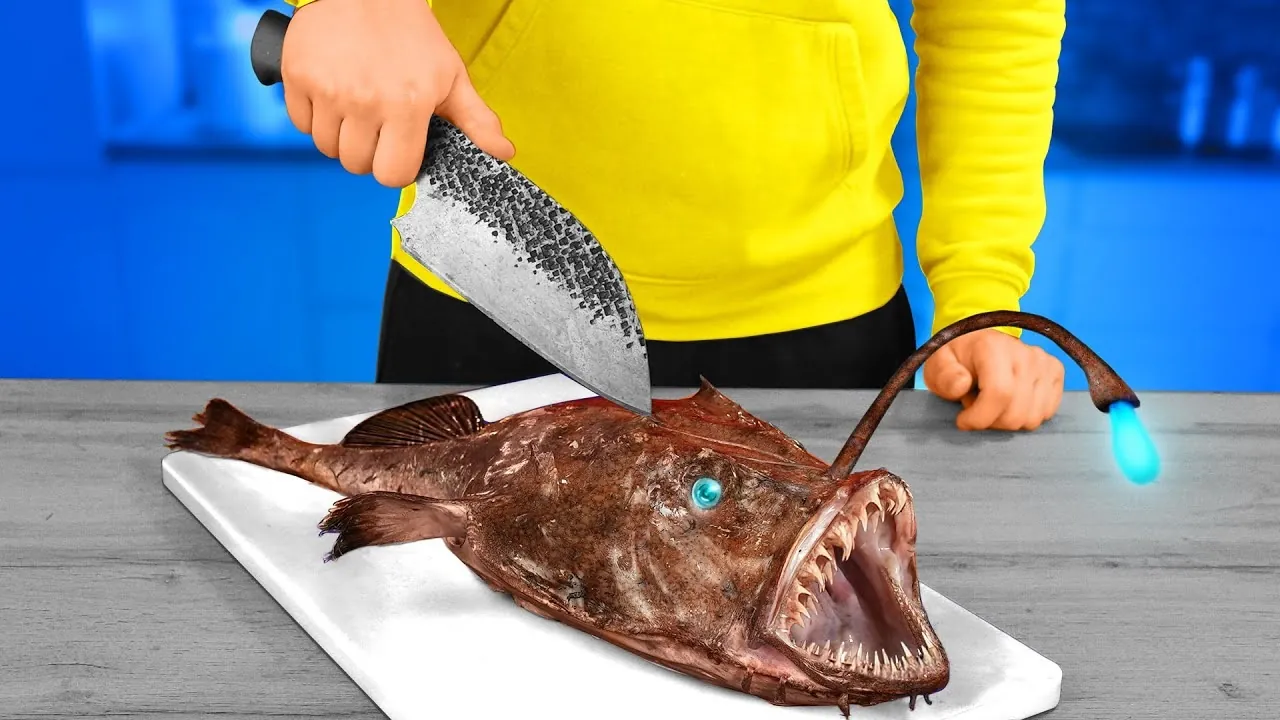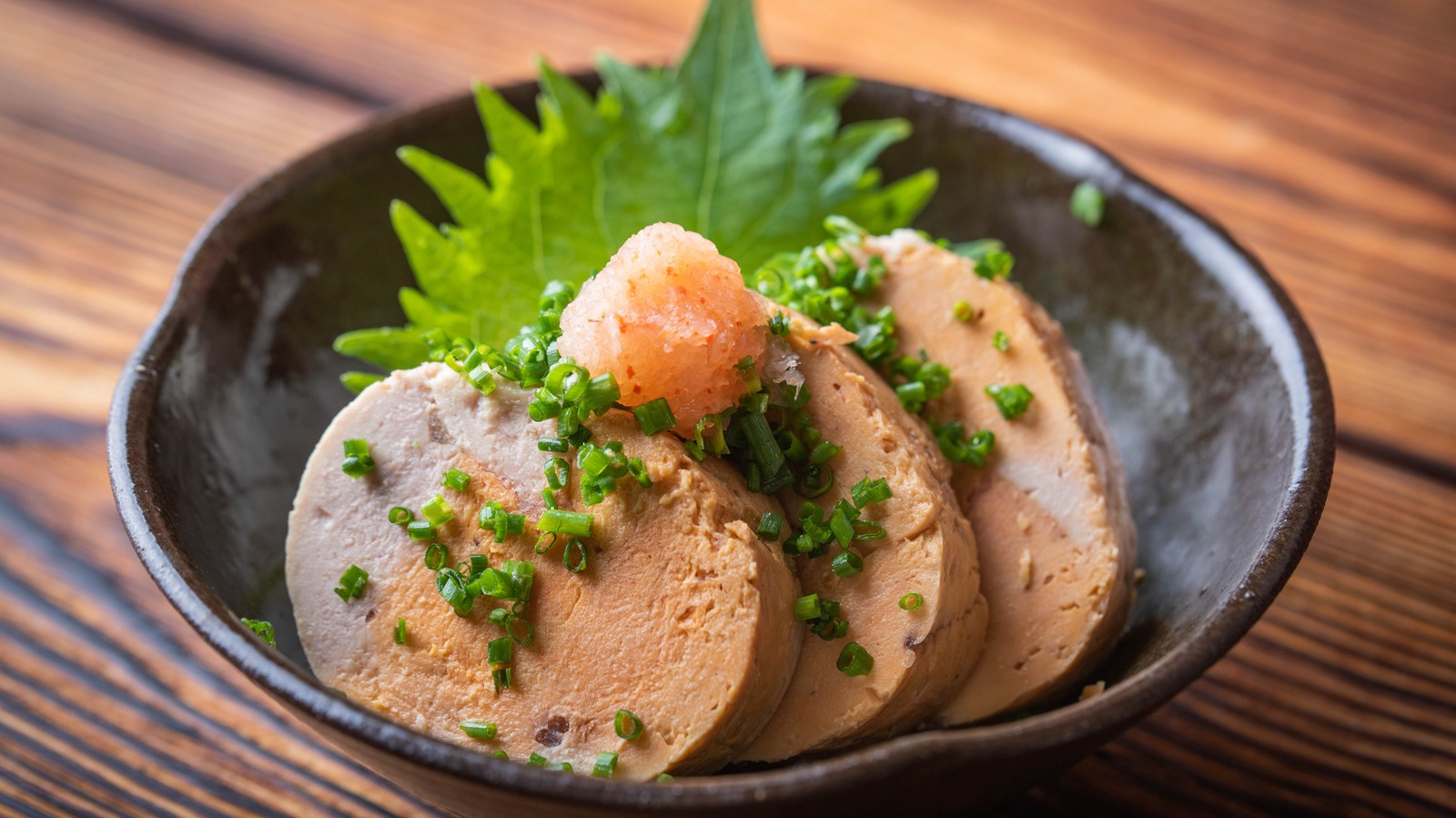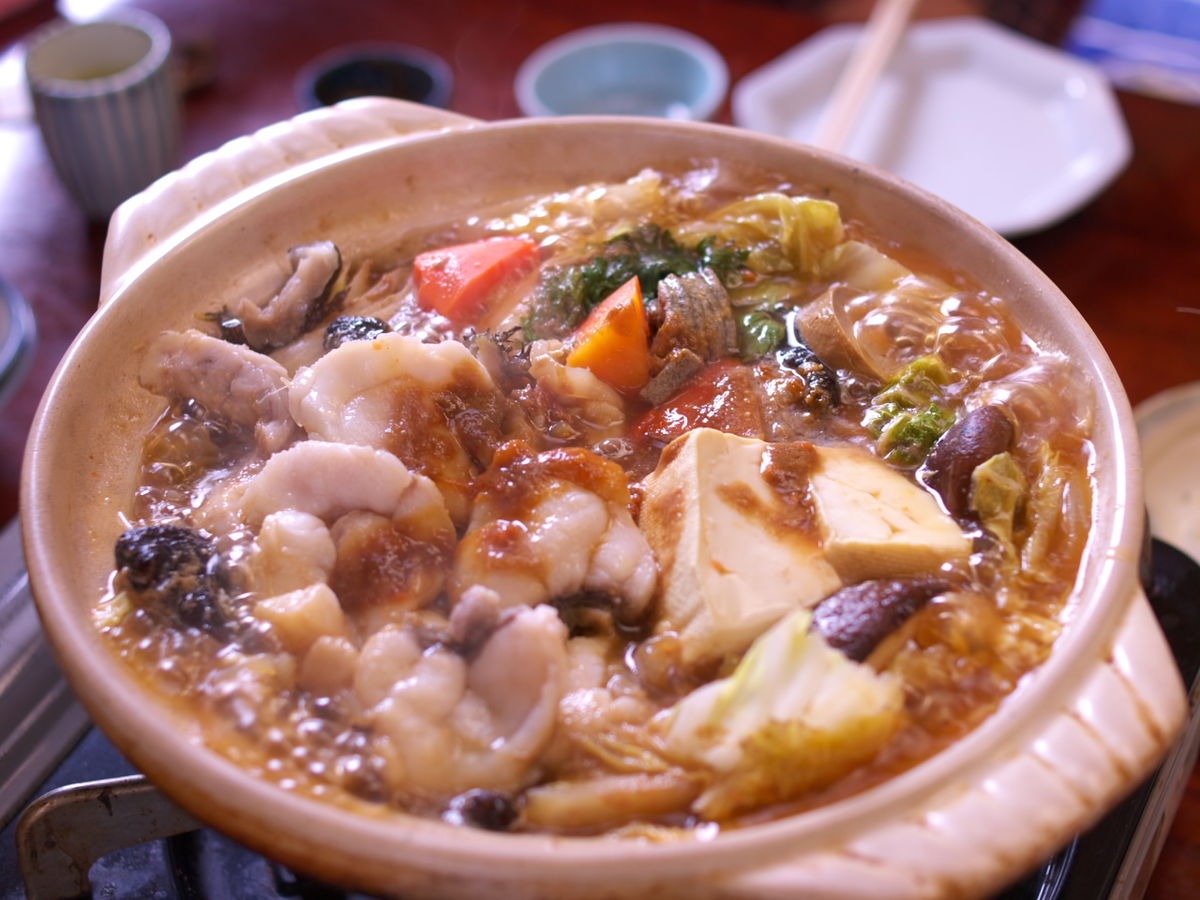
A deep-sea anglerfish recently surfaced near Tenerife, shocking scientists. These creatures live in total darkness, thousands of feet below, nowhere near where humans usually see them.
Many people shared theories about why it appeared, while others were more interested in a different question – can you eat the anglerfish?
The answer is yes. People in Japan have been eating it for centuries. Its terrifying appearance does not stop them from turning it into a seasonal delicacy.
The body is slimy, the teeth are sharp, and cutting it on a board is impossible. But none of that matters in Japanese cuisine.
Let’s find out how they prepare it and why they value it so much.
Why Do People in Japan Eat Anglerfish?

VANZAI COOKING
Anglerfish looks terrifying. Its oversized head, sharp teeth, and slimy body make it seem like something no one should eat. But in Japan, it has been a prized food for centuries.
The main reason is simple—availability and nutrition. Anglerfish is common in Japanese waters, especially along the Pacific coast.
Fishermen in places like Ibaraki Prefecture have been catching it for generations. Instead of throwing it away because of its ugly appearance, they found ways to use every part of it.
It is also packed with nutrients. The meat is low in fat and high in protein, while the liver is rich in vitamins and healthy oils. In winter, when anglerfish is in season, many people believe it helps keep them warm and healthy.
Anglerfish Nutrition Facts
| Nutrient | Amount per 100g |
|---|---|
| Calories | 58 kcal |
| Protein | 12.9 g |
| Total Fat | 0.2 g |
| Carbohydrates | 0.3 g |
| Vitamin B12 | 1.2 µg |
| Vitamin D | 1.0 µg |
| Selenium | 33.5 µg |
| Phosphorus | 140 mg |
| Potassium | 220 mg |
| Sodium | 110 mg |
Beyond nutrition, anglerfish has become a part of Japanese food culture. People associate it with winter, hot pot meals, and traditional cooking.
In cities like Oarai, restaurants serve it as a specialty, attracting tourists who want to try something unique.
The thing that surprised me the most is that it is also served as a street food.
How Chefs Prepare Something So Slimy
Chefs in Japan use a unique method to handle it—hanging the fish in the air before slicing it apart.
The technique is known as tsurushi-giri, and it allows them to separate each part properly without losing its texture or making a mess.
Why Anglerfish Cannot Be Cut Like Other Fish
Most fish can be cleaned and filleted on a table, but anglerfish presents a challenge. Its skin is too slimy, its flesh is too soft, and it sticks to surfaces instead of slicing cleanly.
If placed on a board, it would slip around, making it almost impossible to cut properly.
Because of this, Japanese chefs hang the fish from a hook and work from the top down.
The weight of the fish helps pull the flesh apart naturally, allowing for precise cuts without damaging the delicate meat. This technique is essential for making sure every part is used correctly.
The Seven Parts of the Anglerfish
Unlike many fish, anglerfish is eaten almost entirely. Japanese chefs separate it into seven main parts, each with its own use:
- Meat – Mild in flavor and firm, used in hot pots and stews.
- Liver – The most prized part, often called the foie gras of the sea.
- Skin – Soft and gelatinous, sometimes boiled or deep-fried.
- Fins – Crisp and often added to soups for texture.
- Gills – Less common but sometimes included in broths.
- Stomach – Chewy and used in certain traditional dishes.
- Ovaries – Delicacy in some regions, often served grilled or boiled.
How Anglerfish Is Cooked in Japan

The most famous way to eat anglerfish is in anko nabe, a hot pot dish where the meat is simmered with vegetables, tofu, and a miso-based broth.
The liver is blended into the broth, adding depth and richness to the flavor.
Other cooking methods include:
- Ankimo – The liver is steamed, sliced, and served with ponzu sauce, similar to foie gras.
- Grilled Anglerfish – Meat is grilled over charcoal with a light soy-based glaze.
- Anglerfish Tempura – Pieces of meat are battered and fried for a crispy texture.
- Anglerfish Sushi – A rare but high-end dish where the meat or liver is served raw.
It is a seasonal meal, usually available between December and March.
What Anglerfish Tastes Like
Anglerfish does not taste how it looks. Its monstrous appearance suggests something strong or unpleasant, but the reality is the opposite.
The meat is mild, slightly sweet, and firm, often compared to lobster or monkfish. It absorbs flavors well, which is why it works perfectly in stews, miso-based broths, and grilled dishes.
Why the Liver Stands Out
The liver is what sets anglerfish apart. Rich, creamy, and buttery, it is often called the foie gras of the sea.
When steamed and served with ponzu sauce, it has a smooth texture and deep umami flavor. In hot pot dishes, it melts into the broth, giving it an intense, savory richness.
Also, if you are not into experimenting with exotic food, just stick to Moqueca.
Most Popular Dishes Made with Anglerfish

Anglerfish appears in several well-known dishes across Japan:
- Anko Nabe (Anglerfish Hot Pot) – A winter favorite where chefs simmer the fish with vegetables and miso or soy-based broth. The liver blends into the soup, giving it a rich, deep flavor.
- Ankimo (Steamed Liver) – The liver goes through a steaming process before chefs slice it and serve it with ponzu sauce. Many compare it to foie gras.
- Anglerfish Tempura – Chefs coat pieces of meat or skin in batter before frying them to create a crispy texture with a soft inside.
- Grilled Anglerfish – A traditional method where chefs cook the meat over charcoal and season it with salt or soy sauce for a smoky taste.
- Hirezake (Fins in Hot Sake) – A drink where chefs dry the fins and place them in warm sake to add a deep umami flavor.
Is It Worth Trying?
Anglerfish looks horrifying, but that does not mean it tastes bad. The meat is mild, the liver is rich, and when prepared properly, it becomes something that surprises most people who try it. If you are someone who enjoys seafood and wants to experience something beyond the usual fish, it is absolutely worth it.
That said, it is not for everyone. The texture can be unusual, and the idea of eating something that looks like a deep-sea monster might put some people off. But if you can move past its appearance, you will understand why people in Japan have valued it for centuries.
















